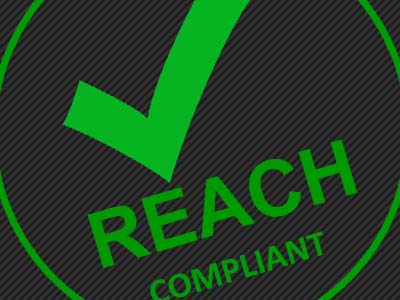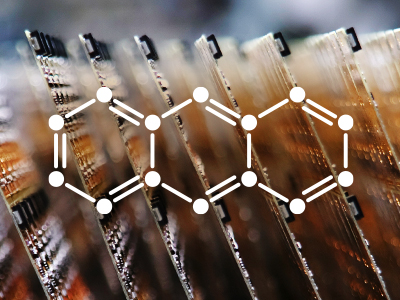As we discussed in our previous article, the EU REACH regulation was designed to improve the assessment of chemical substances for hazards and to implement risk management measures to protect humans, animals, and the environment. So how do manufacturers comply with this regulation?
REACH Compliance Guidelines
The guidelines to fulfill the REACH requirements can be summarized as follows:
- Product information collection and analysis
- Registration of substances
- European Chemicals Agency (ECHA) registration evaluation
- Ruling on substances by the ECHA
- REACH certification
How Suppliers Comply With REACH
Manufacturers must comply with REACH if they manufacture or supply articles within the EU or are importing articles from outside the EU. REACH may also apply to a chemical substance produced from the recovery of waste in quantities of one tonne or more per calendar year. Some chemical substances are partially or completely exempt from REACH.
The REACH regulation places responsibility on industries to manage the risks from chemicals and to provide safety information on substances. Manufacturers and importers are required to gather information on the properties of their chemical substances and register the information in a central database in the European Chemicals Agency (ECHA) in Helsinki.
The ECHA is the central point of the REACH system: it coordinates the in-depth evaluation of suspicious chemicals and maintains a public database in which consumers and professionals can find hazard information. The regulation also calls for the progressive substitution of the most dangerous chemicals (referred to as “substances of very high concern”) when suitable alternatives have been identified.
A REACH certificate of compliance is a document certifying that a product is compliant with the EU REACH regulation. It can be a testing report or statement issued by a third-party testing organization. It could also be a self-declaration by the supplier.
REACH also requires article suppliers to inform the recipients if an article contains a substance of very high concern (SVHC) of more than 0.1% by weight.
Awareness
All companies need to think about the impact of registration on downstream users of chemicals. Registrants should communicate their intentions to the downstream users and companies should inform the registrants of their need to have certain substances on the market.
Substances of Very High Concern (SVHC)
Article 33(1) of the REACH regulation states that manufacturers and importers of articles (products) are required to notify their customers about the presence of any substances of very high concern (SVHC) in their products exceeding 0.1% by weight and provide instructions on safe use of the product. The first list of SVHC was published on 28 October 2008. Recently, the ECHA Updated the SVHC Candidate List to 219 Substances as on 08-Jul-2021.
Under REACH, substances data must be collected from suppliers and provided to customers when an SVHC is present over the allowed threshold limit.
Substances Completely Excluded from REACH
- Radioactive substances
- Substances under customs supervision
- Substances used in the interest of defence and covered by National exemptions
- Waste
- Non-isolated intermediates and transported substances
Exemption and Registration
The following substances do not need to be registered, regardless of how they will be used:
- Polymers: substances meeting the definition of a polymer under REACH do not need to be registered, but the monomers and other substances used for the manufacture of the polymer may need to be registered.
- Substances covered by Annex V to REACH: this list describes 13 broad categories of substances.
- Substances included in Annex IV to REACH: this list contains 68 low-risk substances, typically of natural origin, including water.
- Radioactive substances: substances giving off such radiation that humans and the environment need to be protected are regulated by the Euratom Directive.
- Substances covered by a national exemption in the interest of defense.
Substances do not need to be registered when only used:
- as non-isolated intermediates: intermediates that during the synthesis are not intentionally removed from the equipment in which the synthesis takes place (except for sampling).
- for product and process orientated research and development (PPORD): exempt from registration for five years (extensions possible), if you notify your PPORD activities to ECHA.
- in food or feeding stuffs (including uses as additives or flavourings).
- in medicinal products for human or veterinary use as active substances or excipients.
- in biocidal products or plant protection products as active substances. These are regarded as already registered.
- substances already registered, exported, and re-imported to the EEA.
- substances under customs supervision, with a view to re-exportation.
- Waste: substances which are discarded as waste (from households, professionals, or industry) as defined in the Waste Framework Directive do not need to be registered, but substances produced from the recovery of waste generally need to be registered; except recovered substances already registered.
The following substances have some specific provisions under REACH but are not exempted from registration:
- Nano particles
- Non-hazardous substances and not-classified substances
- Substances in cosmetic products
- Food contact materials
- Fuels
- Substances present in mixtures below certain concentration limits
- On-site or transported isolated intermediates
- Substances of very high concern (SVHC)
- Substances subject to authorization or restriction
- Substances notified under Directive 67/548/EEC
Conclusion
Manufacturers carry most of the responsibility for compliance under the REACH regulation, but they are not expected to act alone. Manufacturers and importers work together with the ECHA to maintain information on various substances and work to reduce hazards and risks associated with these chemicals.





